Abstract
Topical treatment, with drug-containing ointments, of cutaneous leishmaniasis caused by Leishmania major in BALB/c mice was studied. Twenty chemotherapeutic agents having potential or established antileishmanial activity were formulated in different ointment and cream bases. Only 15% paromomycin sulfate with 12% methylbenzethonium chloride, 12% benzethonium chloride, 12% cetalkonium chloride, or 12% dimethyl sulfoxide, all incorporated in white soft paraffin (United Kingdom patent application no. 2117237A), were completely effective. Topical treatment twice daily for 6 or more days caused total elimination of the parasites and healing of the lesion in all treated mice. All the other antileishmanial compounds, including sodium stibogluconate, pentamidine, amphotericin B, emetine hydrochloride, metronidazole, co-trimoxazole, allopurinol, and rifampin, either showed a slight effect on the parasites or were highly toxic to the animal host at the concentrations tested.
Full text
PDF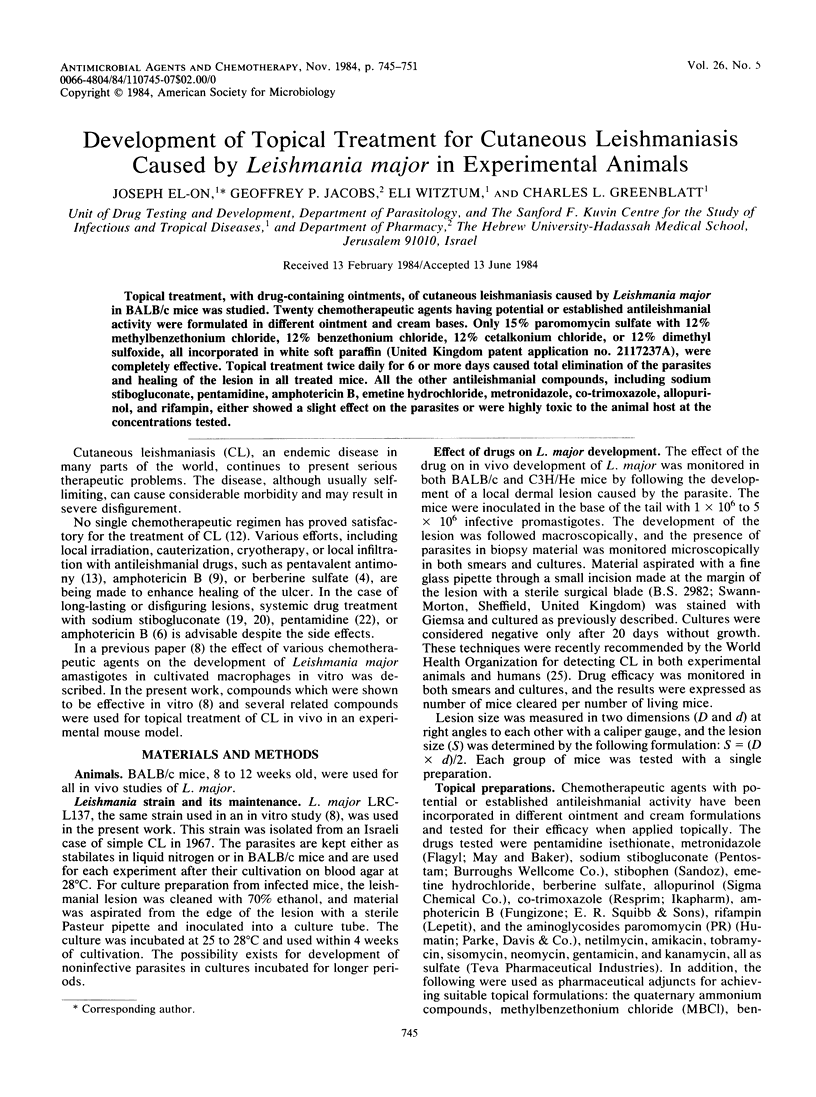
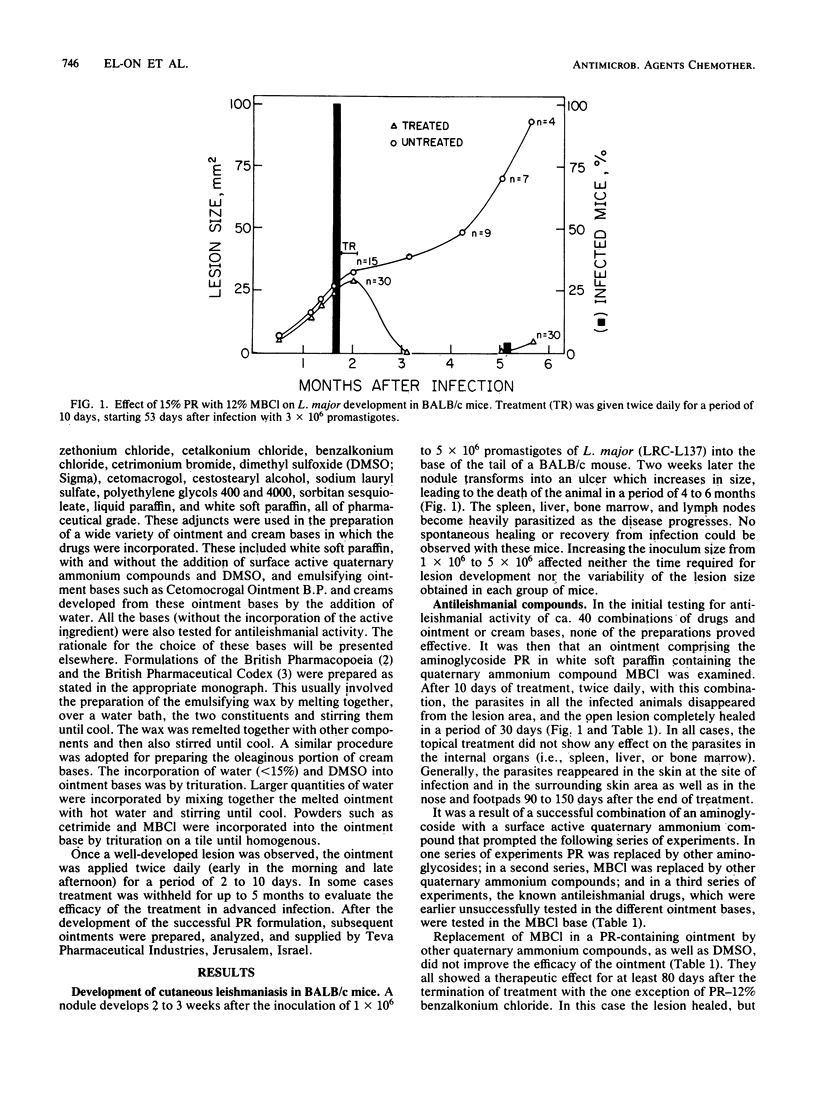
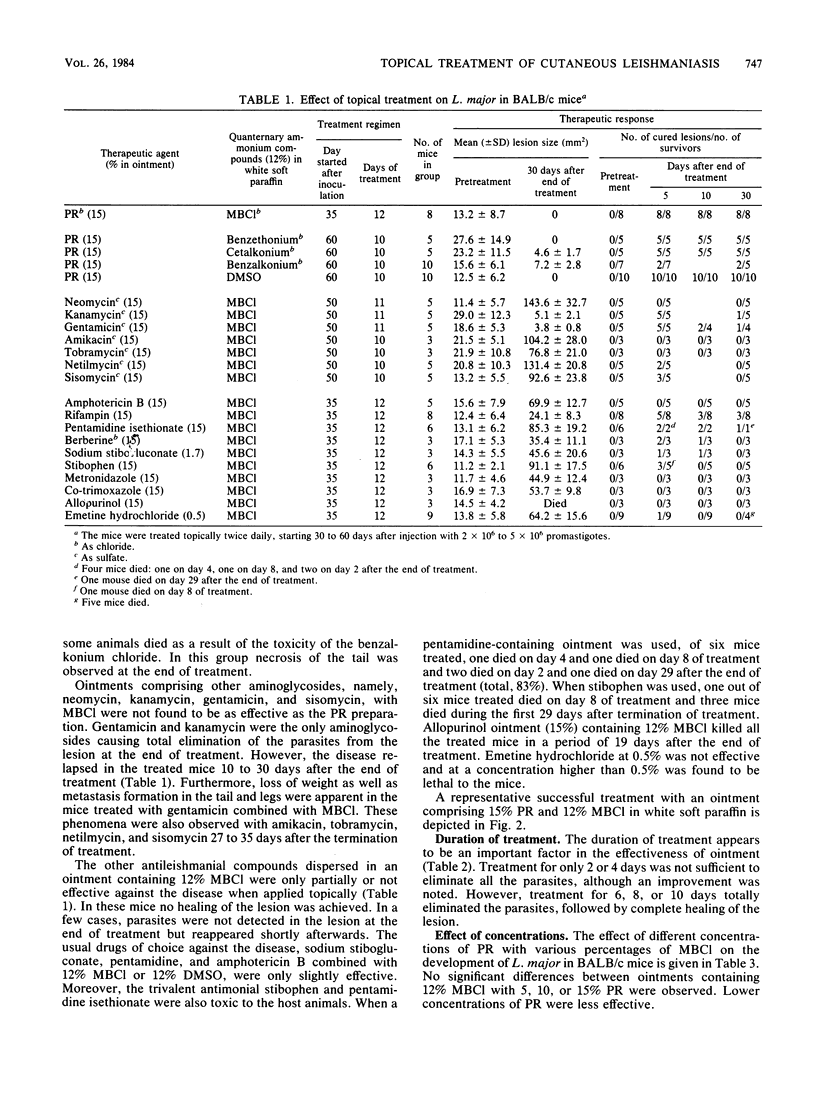

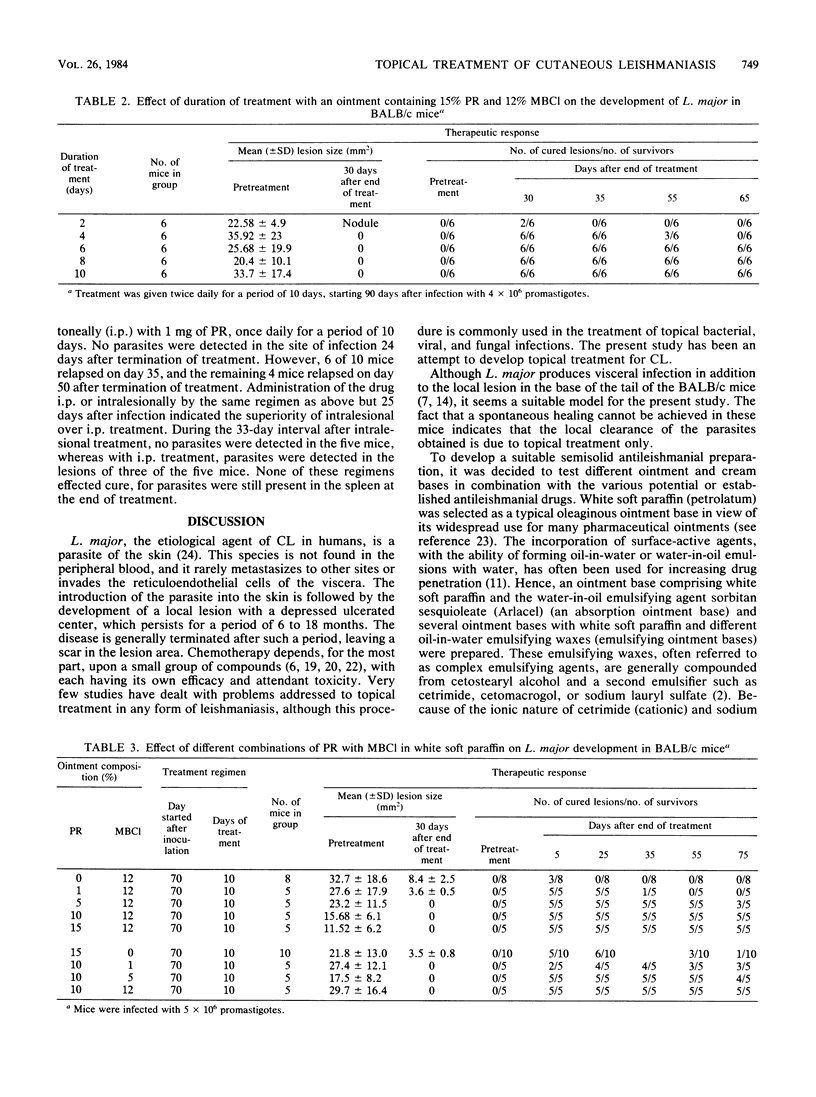
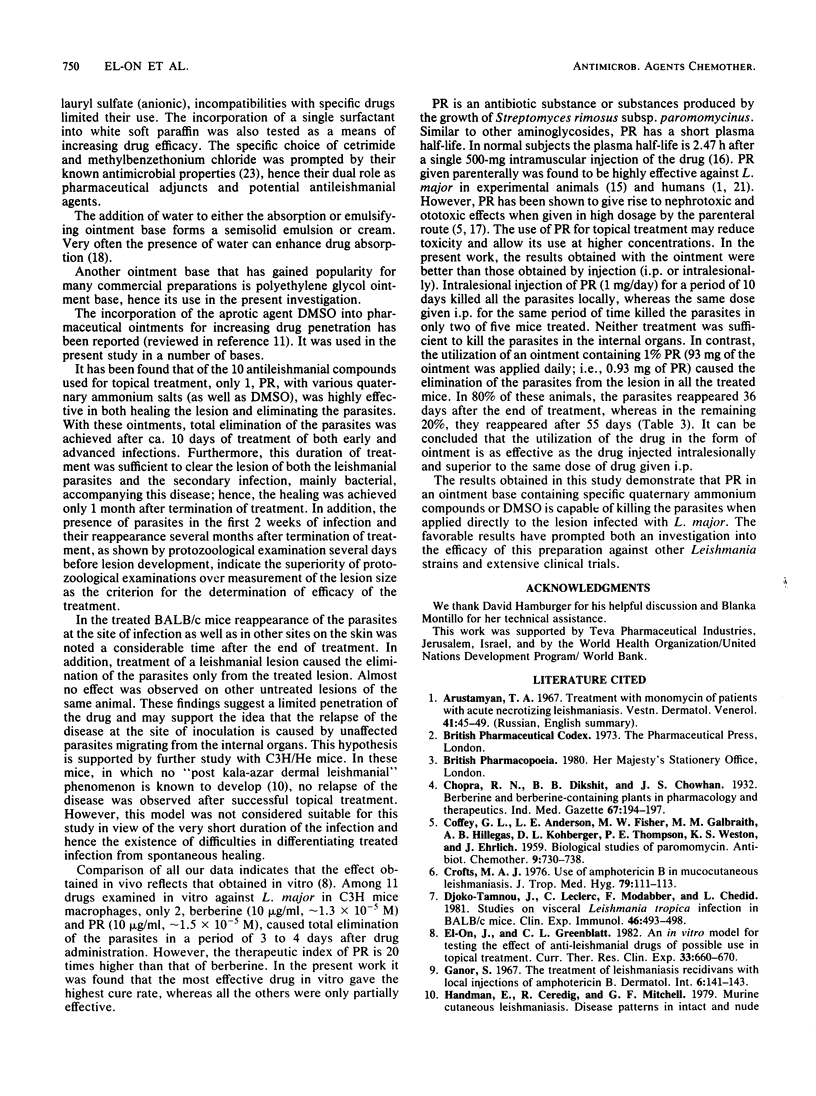
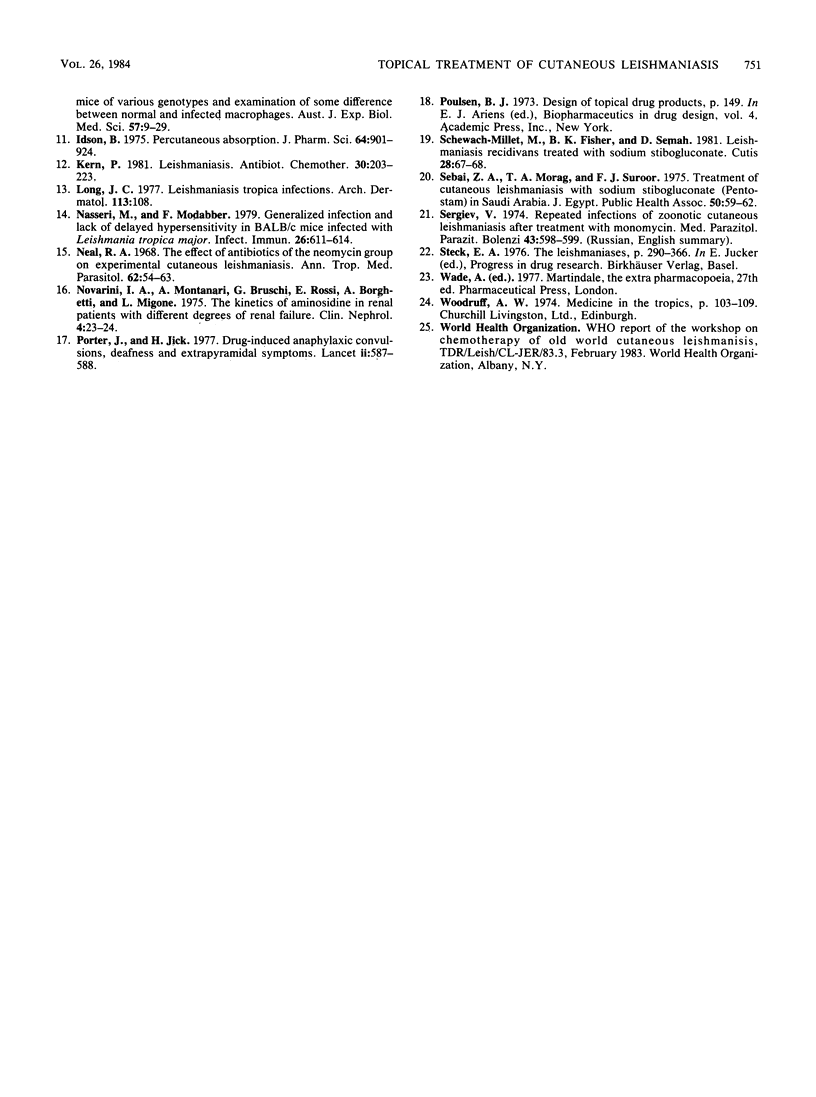
Images in this article
Selected References
These references are in PubMed. This may not be the complete list of references from this article.
- COFFEY G. L., ANDERSON L. E., FISHER M. W., GALBRAITH M. M., HILLEGAS A. B., KOHBERGER D. L., THOMPSON P. E., WESTON KS EHRLICH J. Biological studies of paromomycin. Antibiot Chemother (Northfield) 1959 Dec;9:730–738. [PubMed] [Google Scholar]
- Crofts M. A. Use of amphotericin B in mucocutaneous leishmaniasis. J Trop Med Hyg. 1976 May;79(5):111–113. [PubMed] [Google Scholar]
- Djoko-Tamnou J., Leclerc C., Modabber F., Chedid L. Studies on visceral Leishmania tropica infection in BALB/c mice. I. Clinical features and cellular changes. Clin Exp Immunol. 1981 Dec;46(3):493–498. [PMC free article] [PubMed] [Google Scholar]
- Ganor S. The treatment of leishmaniasis recidivans with local injections of amphotericin B. Dermatol Int. 1967 Jul-Sep;6(3):141–143. doi: 10.1111/j.1365-4362.1967.tb05251.x. [DOI] [PubMed] [Google Scholar]
- Handman E., Ceredig R., Mitchell G. F. Murine cutaneous leishmaniasis: disease patterns in intact and nude mice of various genotypes and examination of some differences between normal and infected macrophages. Aust J Exp Biol Med Sci. 1979 Feb;57(1):9–29. doi: 10.1038/icb.1979.2. [DOI] [PubMed] [Google Scholar]
- Idson B. Percutaneous absorption. J Pharm Sci. 1975 Jun;64(6):901–924. doi: 10.1002/jps.2600640604. [DOI] [PubMed] [Google Scholar]
- Kern P. Leishmaniasis. Antibiot Chemother (1971) 1981;30:203–223. doi: 10.1159/000398098. [DOI] [PubMed] [Google Scholar]
- Long J. C. Leishmania tropica infections. Arch Dermatol. 1977 Jan;113(1):108–108. [PubMed] [Google Scholar]
- Nasseri M., Modabber F. Z. Generalized infection and lack of delayed hypersensitivity in BALB/c mice infected with Leishmania tropica major. Infect Immun. 1979 Nov;26(2):611–614. doi: 10.1128/iai.26.2.611-614.1979. [DOI] [PMC free article] [PubMed] [Google Scholar]
- Neal R. A. The effect of antibiotics of the neomycin group on experimental cutaneous leishmaniasis. Ann Trop Med Parasitol. 1968 Mar;62(1):54–62. doi: 10.1080/00034983.1968.11686529. [DOI] [PubMed] [Google Scholar]
- Novarini A., Montanari A., Bruschi G., Rossi E., Borghetti A., Migone L. The kinetics of aminosidine in renal patients with different degrees of renal failure. Clin Nephrol. 1975 Jul;4(1):23–24. [PubMed] [Google Scholar]
- Porter J., Jick H. Drug-induced anaphylaxis, convulsions, deafness, and extrapyramidal symptoms. Lancet. 1977 Mar 12;1(8011):587–588. doi: 10.1016/s0140-6736(77)92011-6. [DOI] [PubMed] [Google Scholar]
- Schewach-Millet M., Fisher B. K., Semah D. Leishmaniasis recidivans treated with sodium stibogluconate. Cutis. 1981 Jul;28(1):67-8, 77, 84 passim. [PubMed] [Google Scholar]
- Sergiev V. P. Povtornye zabolevaniia zoonoznym kozhnym leishmaniozom posle lecheniia monomitsinom. Med Parazitol (Mosk) 1974 Sep-Oct;43(5):598–599. [PubMed] [Google Scholar]



